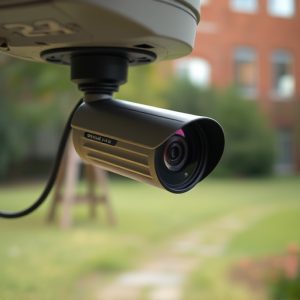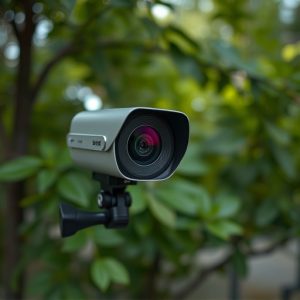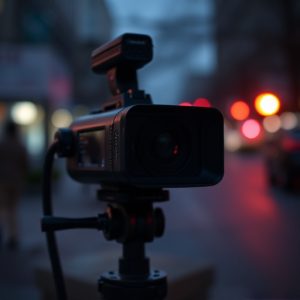Unveiling Hidden Cameras: Detection Tips & Legal Guide for Peace of Mind
Nanny cams, hidden cameras used for monitoring in homes and childcare settings, require strategic pl…….
Nanny cams, hidden cameras used for monitoring in homes and childcare settings, require strategic placement and detection methods. To protect privacy, place them discreetly in high-interaction areas like bathrooms, bedrooms, kitchens, and living rooms, focusing on corners and behind furniture. Individuals can counter surveillance using RF and IR signal detection, counter-tracking apps, and physical blocking methods. Navigating legal and ethical boundaries is vital; inform all parties about camera locations to maintain transparency and respect privacy while hiding nanny cams effectively.
Uncover the secrets behind hidden monitoring devices with our comprehensive guide. From understanding sophisticated nanny cam technology and detection methods, to locating common hiding spots and mastering advanced signal-detection techniques, this article equips you with the knowledge to stay ahead of surveillance. We also explore legal boundaries and ethical considerations surrounding these devices, emphasizing responsible use. Discover where to hide nanny cams effectively while prioritizing privacy and security.
- Understanding Nanny Cam Technology and Detection Methods
- Locating Common Hidden Spots for Nanny Cams
- Advanced Techniques to Detect Signal and Avoid Surveillance
- Legal Considerations and Ethical Use of Hidden Monitoring Devices
Understanding Nanny Cam Technology and Detection Methods
Nanny cams, also known as hidden cameras, are a common tool for monitoring activities in homes or childcare settings. Understanding their technology and detection methods is crucial when it comes to both using them effectively and avoiding being monitored undetected. These devices typically use small, discreet cameras that can be hidden in various locations like smoke detectors, clocks, or even fake electrical outlets. They often come with infrared capabilities for nighttime vision and motion-activated recording features.
Detecting nanny cams requires a keen eye for detail and up-to-date knowledge about the latest monitoring technologies. One of the first steps is to conduct a thorough inspection of your surroundings, looking for any unusual or seemingly out-of-place objects. Check common hiding spots like mentioned above, as well as behind furniture, under rugs, or inside bookcases. Additionally, using thermal imaging cameras or specialized detection software can aid in identifying hidden devices that may not be visible to the naked eye. Remember that staying one step ahead involves constant vigilance and staying informed about new monitoring device trends.
Locating Common Hidden Spots for Nanny Cams
Many people install nanny cams in hidden spots around their homes to ensure their children or elderly relatives are safe while under care. Common places to hide these devices include areas with frequent human interaction, such as: bathrooms, bedrooms, kitchens, and living rooms. Pay close attention to corners and behind furniture, as these areas often offer optimal viewing angles and concealment. Remember that the goal is to place the camera where it can monitor activity without raising suspicion.
Advanced Techniques to Detect Signal and Avoid Surveillance
In today’s digital age, advanced surveillance techniques have made it easier than ever to hide monitoring devices, commonly known as nanny cams. To counter this, individuals looking to protect their privacy must employ sophisticated detection methods. One effective strategy is to understand radio frequency (RF) and infrared (IR) signals, which are often used by these hidden cameras. By investing in specialized RF and IR detectors, users can scan for suspicious signals, helping them identify potential nannycam locations within their homes or offices.
Additionally, using counter-surveillance apps that emulate mobile network signals can interfere with tracking devices. These apps generate false GPS readings, making it harder for unauthorized observers to pinpoint the exact location of hidden cameras. Furthermore, physical barriers like metal sheets, dense vegetation, or reflective surfaces can obstruct signal transmission, providing additional layers of protection when strategically placed around suspected camera spots.
Legal Considerations and Ethical Use of Hidden Monitoring Devices
When considering the deployment of hidden monitoring devices, such as nanny cams, it’s crucial to understand the legal and ethical boundaries that surround their use. In many jurisdictions, there are strict regulations regarding privacy rights, particularly in domestic settings. Installing surveillance equipment without consent can be a breach of privacy laws and lead to serious consequences.
The ethical use of hidden monitoring devices requires a delicate balance between safety concerns and individual freedoms. Where to hide nanny cams should always be done with transparency and respect for privacy. It’s essential to inform all parties involved, especially those being recorded, about the presence of cameras to ensure compliance with legal requirements and foster an environment of trust.
In conclusion, while understanding the technology behind nanny cams is crucial for both their effective use and detection, it’s equally important to consider the ethical and legal implications. By mastering advanced signal detection techniques and being aware of common hiding spots, you can protect your privacy and avoid surveillance. Remember, the key to staying one step ahead lies in staying informed about both the latest monitoring device technologies and the ever-evolving legal landscape surrounding their use.


